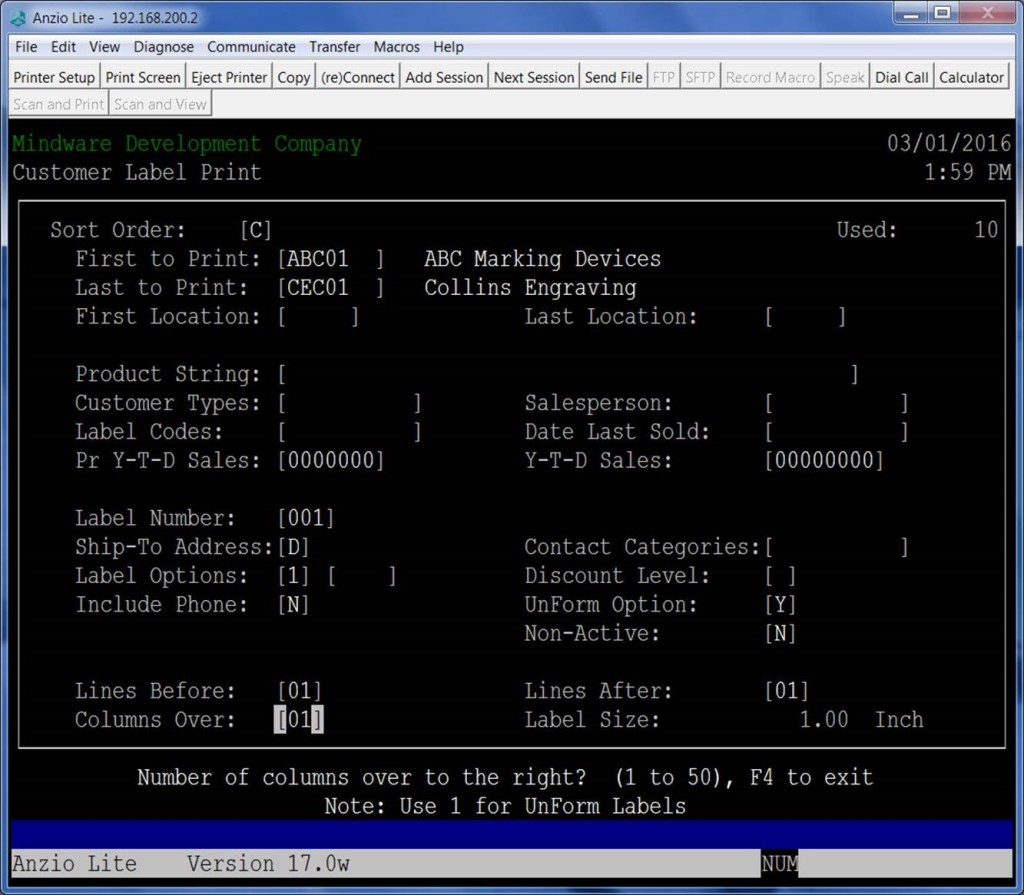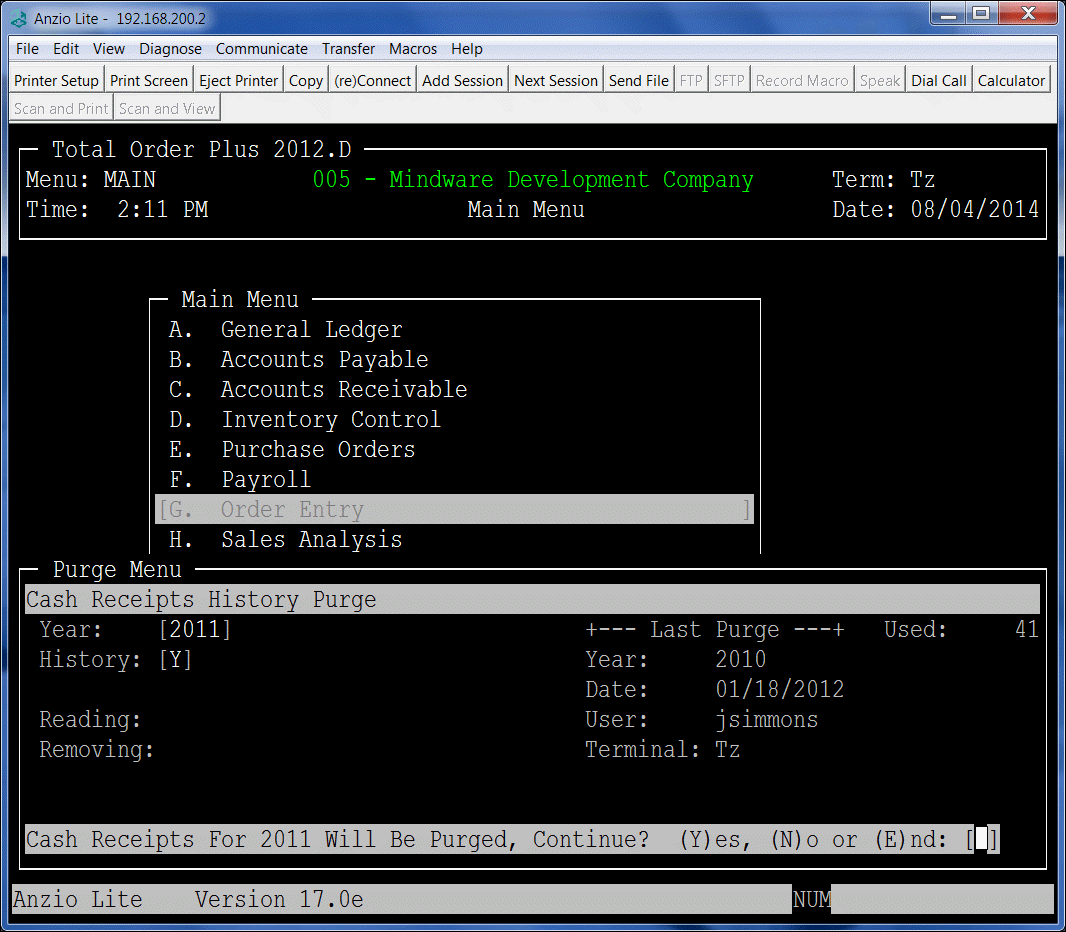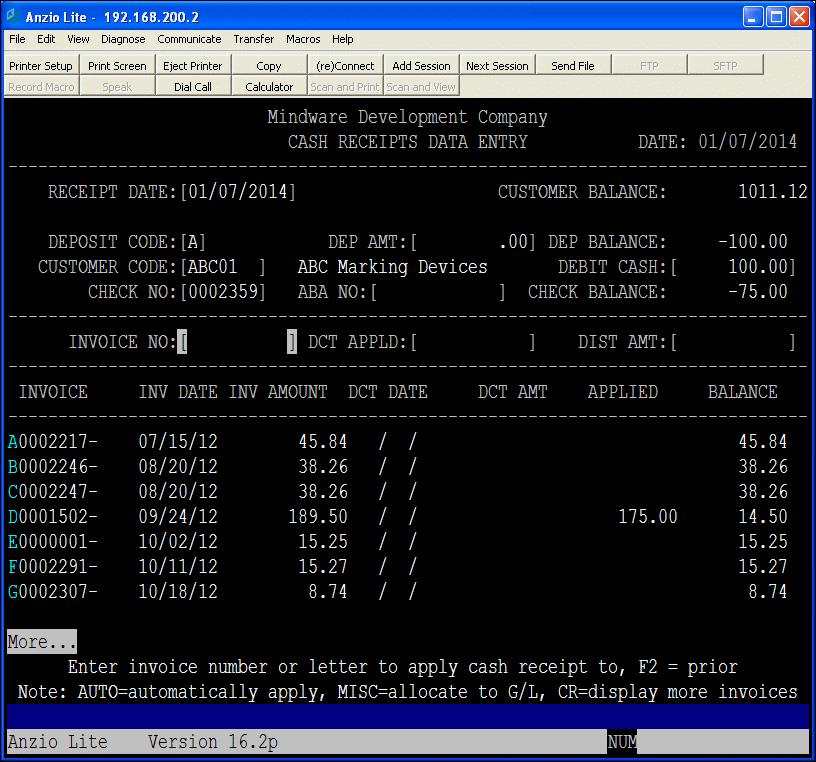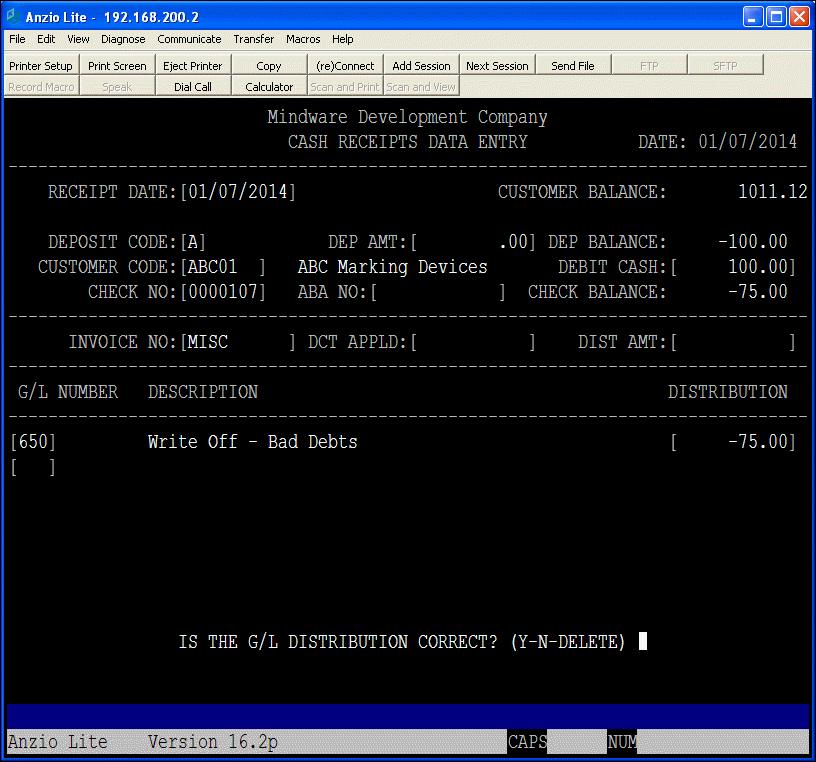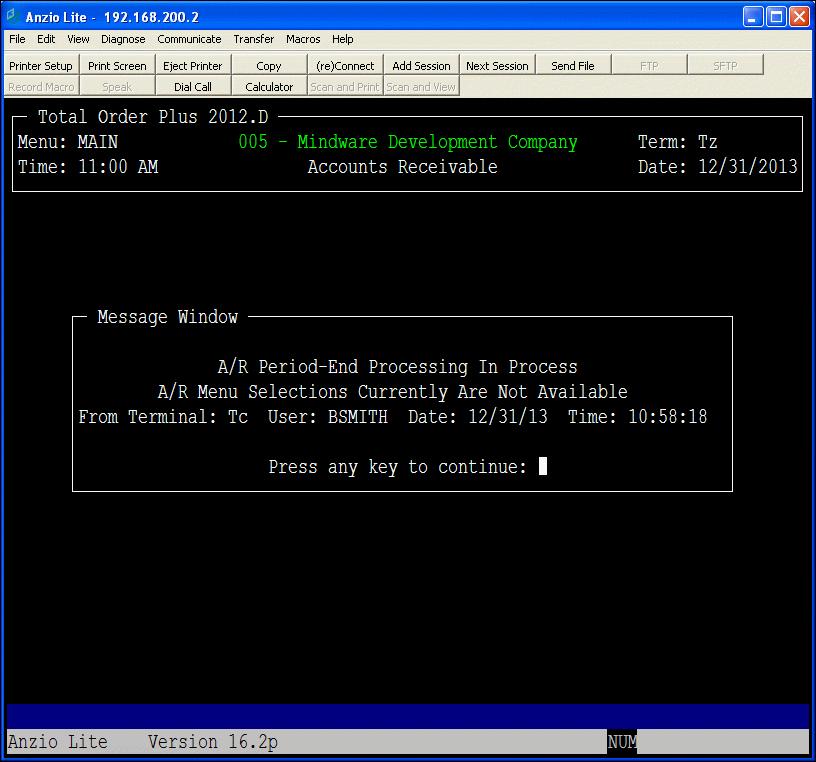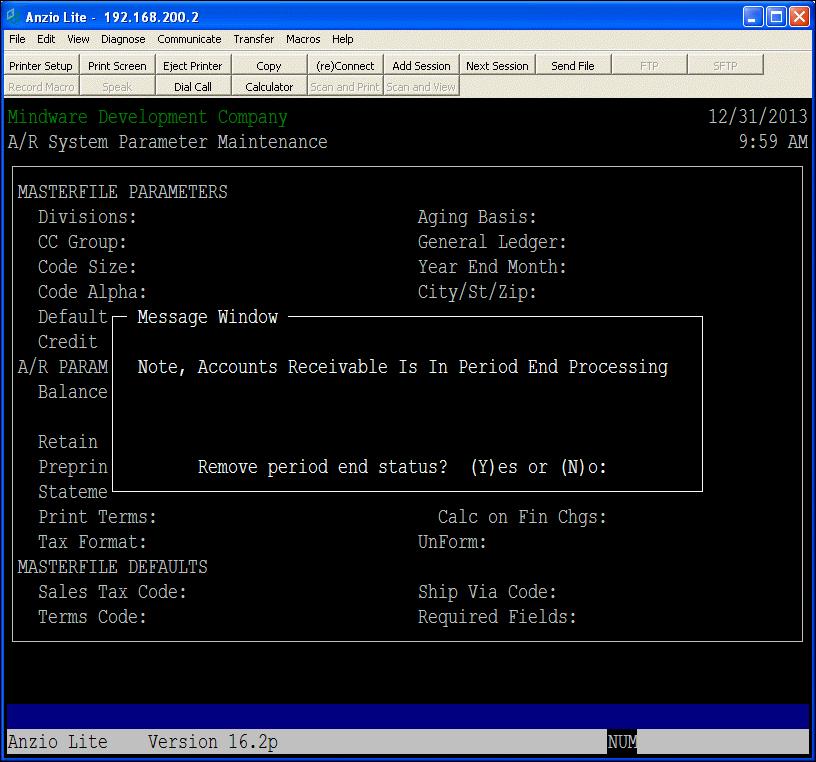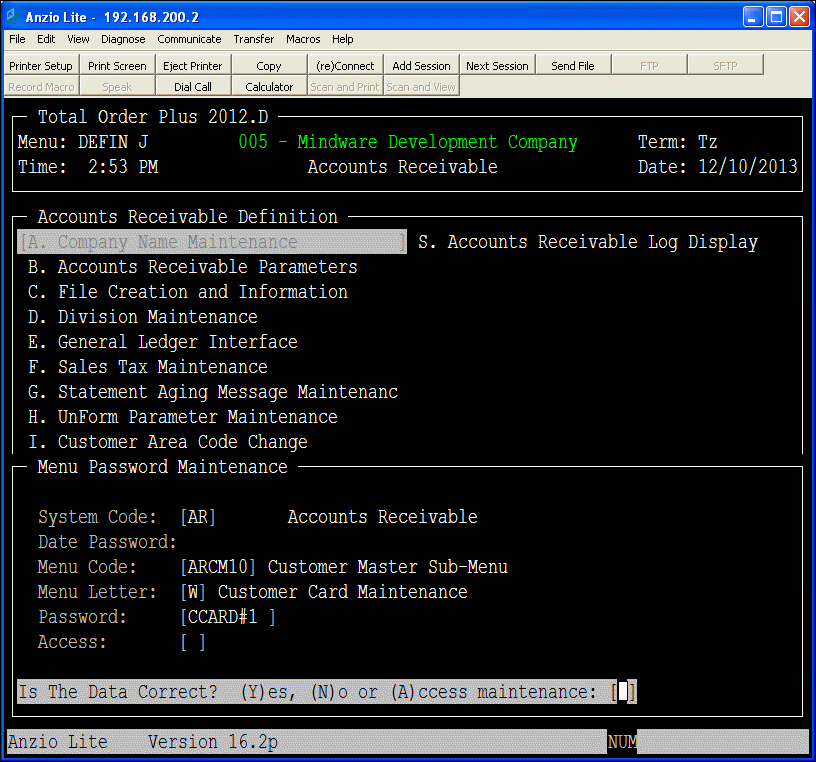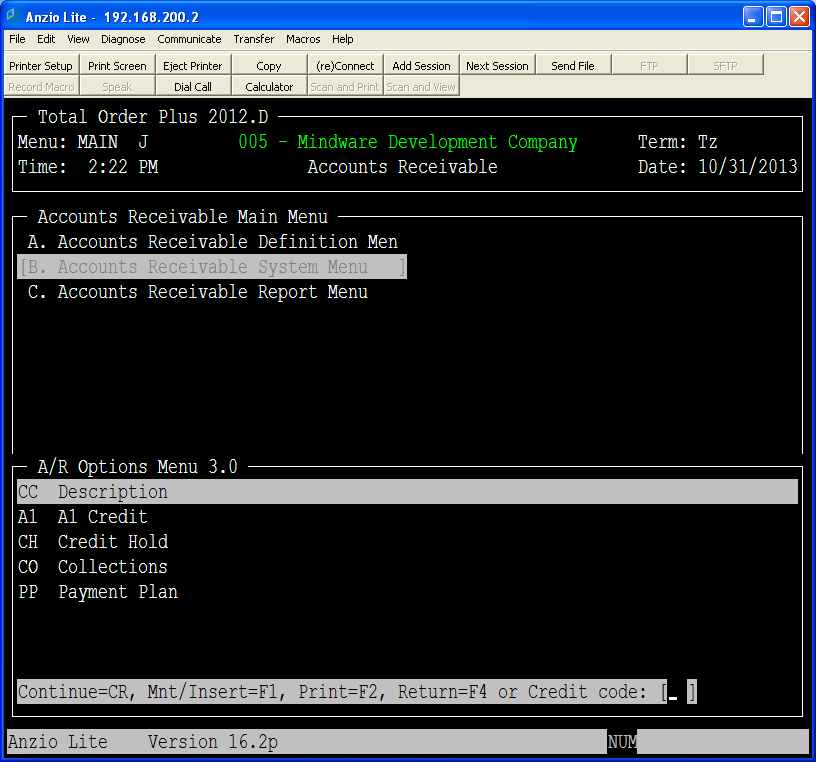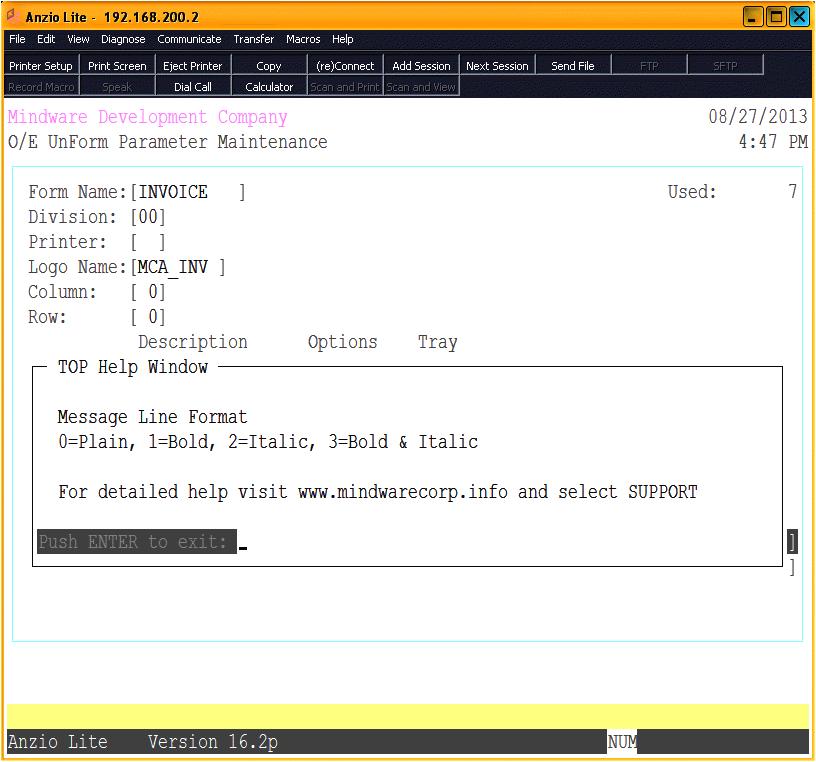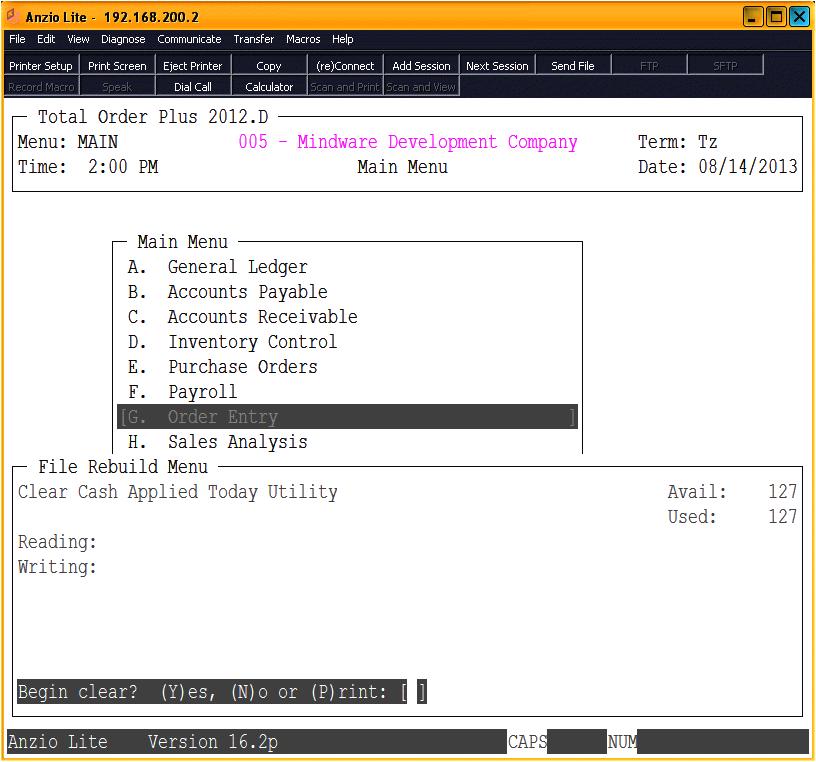At the TOP Main Menu, select Accounts Receivable –> Accounts Receivable Report Menu –> Customer Mailing Labels
Customer mailing labels can be printed in (A)lpha sort order, (C)ustomer code order, (L)ocation by zip code order, (S)tate code order, sales(P)erson by zip code order or last sold (D)ate. You can use the location by zip code order to meet bulk mailing requirements.
Type the first customer code and the last customer code to print. A ? will display the Customer Code selection window.
Notes: If the first and last customer codes are the same, you will have an option to edit the label information prior to label print.
Type the first and last location (zip) codes – leaving the fields blank will include all zip codes.
To sort label print by product code, enter product codes (3 characters side by side) to include or leave blank to include all.
To sort label print by customer type code, type 2 characters per customer type. A ? will display the A/R Options Menu –> Select Customer Type option.
Type the salesperson to include or type ? to display the Salesperson selection window. Leaving the field blank will include all salespersons.
Label codes can be assigned in the Customer Master. To sort label print by label code, type up to 5 label codes, two characters each or leave blank to include all.
To sort by Date Last Sold, only customers having a last date sold equal to or greater will be included.
To sort by Prior Year To Date sales, type an amount to include or leave field blank to include all.
If you enter Year to Date sales dollars, only customer with sales equal to or greater will be included. To include only customers with zero sales, type ZERO in this field.
Number of labels per customer can be from 1 to 999.
You have an option to include or not include ship to addresses in the label print or only print labels for ship to addresses.
There are multiple sort options that will allow you to limit the number of labels that print or you can leave the option blank not to include any options. Select 1 to print customer code on the label, 2 to print last sold date, 3 to print YTD sales and last sold date, 4 to print last sold date and YTD sales, 5 to include contact name, 6 to print telephone number, 7 to include contact name for a specific year in the history file or 8 to include notary.
You can specify if you want to print the customer’s telephone number on each label.
Each customer has a contact type in their master record. If you want to print only certain customer types, enter two characters per type code.
Type a discount level code to include or leave field blank to include all.
You must select whether or not you are using UnForm formats to print the labels.
Note: If you select to use UnForm, you must select a printer on the TOP printer menu that is set up for UnForm labels. You can also select to print labels to a PDF file which will allow you to review label information before printing, print on another printer not connected to TOP, print a single page or range, email to another user to print labels, etc.
Select to include all customers or to exclude inactive customers.
Note:
If you select to not print inactive customers, please note that customers who are also not active for a mailing list will not print a label either.
To format the label size, select the number of lines before and after each label.
Note: There are 6 lines per inch. For example, a 3 inch label would have 18 lines
Type the number of columns to the right where you want the label information to print.
Note: If you are using UnForm, the number of columns must be one. The size of the label calculated will display on your screen.

